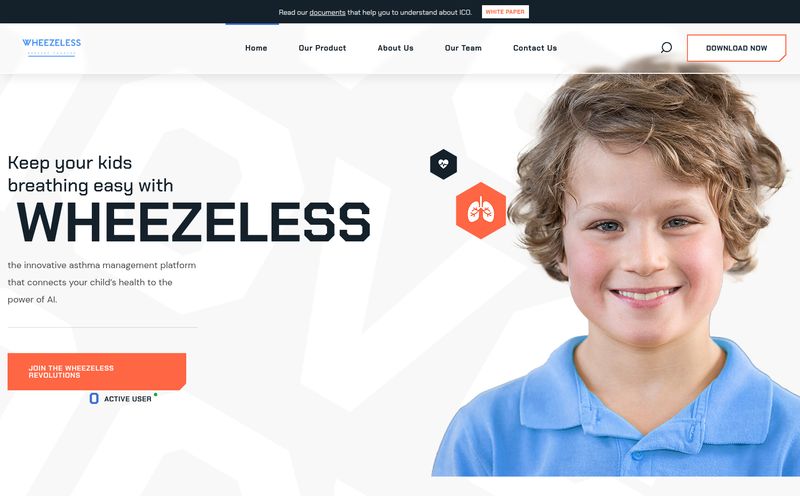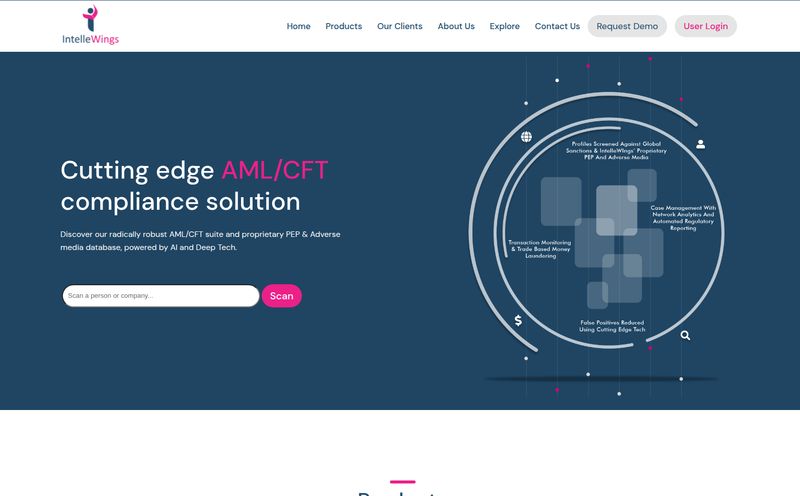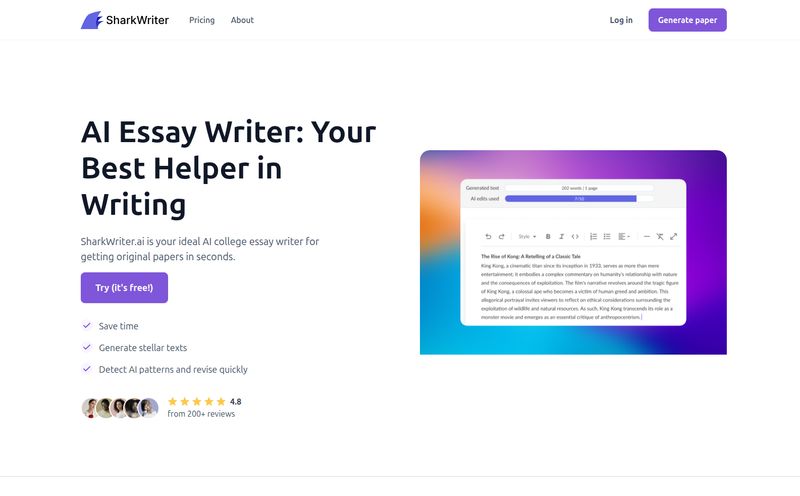Remember late 2022? The internet sort of… broke. Or at least, the content side of it did. When ChatGPT was unleashed upon an unsuspecting public, you could almost hear the collective gasp from writers, marketers, and teachers everywhere. It was a mix of awe and, let’s be real, a healthy dose of panic. Suddenly, the line between human and machine-generated text blurred into oblivion. And in that chaotic new world, a whole cottage industry of AI detectors popped up, each one promising to be the digital bloodhound that could sniff out the bots.
One of the names that floated around in those early days was CheckforAi. It had a clean interface, a simple promise, and best of all, it was free. It felt like a public service, a tool for the people. But if you go looking for it today, you’ll find… well, not much. Just a landing page with a thank you note and an email address. So what happened? Where did it go? And what does its short life tell us about the bigger, messier conversation around AI content?
So, What Exactly Was CheckforAi?
In a nutshell, CheckforAi was a free, nonprofit project designed to do one thing: tell you if a piece of text was likely written by AI. It was specifically aimed at things like student essays and emails, the kind of short-to-medium form content that was most vulnerable to being completely automated. I remember plugging a few AI-generated paragraphs into it myself, just to see what would happen. It was part of that initial wave of frantic experimentation we all went through.
What I found interesting, digging into its background, was its tech stack. It wasn’t just some slapped-together script. The team behind it, Uphold.ai, combined two approaches. First, they used OpenAI's own RoBERTa-base model, a machine learning model that was pretty good at sniffing out patterns in GPT-generated text. Think of it as using a bit of the mothership's own technology to track its offspring. On top of that, they layered their own proprietary models. This two-pronged approach was their attempt to increase accuracy. It was a noble effort, especially for a nonprofit project that wasn't charging a dime.
It was born from a clear need. Teachers were worried about plagiarism on a scale never seen before. SEOs were worried about Google penalizing AI-generated content (a fear that has since… evolved, to put it mildly). There was a genuine demand for a referee in this new game.
The Great Cat-and-Mouse Game of AI Content
The entire existence of tools like CheckforAi is a symptom of the technological arms race we find ourselves in. On one side, you have large language models (LLMs) like the GPT family getting exponentially better at mimicking human nuance, humor, and writing styles. Every update makes them less robotic, less predictable.
On the other side, you have the detectors. They’re trained to spot the fingerprints of AI: things like perfect grammar, certain repetitive sentence structures, or a weirdly uniform distribution of word choices (a concept known as 'perplexity'). For a while, it worked. Early AI text was… clumsy. You could spot it from a mile away. It had a certain soulless perfection to it.
But the mouse got smarter. Fast. The newer AI models learned from the detectors. They were trained to write with more variation, to introduce intentional imperfections, to sound, for all intents and purposes, human. This made the detectors' job almost impossible. It became a game of diminishing returns, where a detector might flag a piece of human writing as AI-generated (a 'false positive') or miss a blatant AI article entirely. I’ve seen it happen to my own writing, and let me tell you, it's a bit of an insult to have a machine tell you that you write like a machine.
What Made CheckforAi Stand Out, For a While
Amidst a sea of new, often expensive, AI detection tools, CheckforAi had a couple of things going for it. The most obvious one? It was free. In an era where every new AI tool seemed to come with a three-tiered subscription plan, a free, no-strings-attached service was a breath of fresh air. It made it accessible to the very people who needed it most: educators and students, not just big marketing agencies.
Its nonprofit status also gave it a certain credibility. It wasn’t trying to cash in on the panic. It felt more like a genuine attempt to provide a solution, driven by the folks at Uphold.ai. This mission-driven approach set it apart from the more commercial players who were clearly just riding the hype wave.
But goodwill and a clever model can only take you so far when you’re fighting a tidal wave.

Visit CheckforAi
The Inevitable Sunset: Where Did It Go?
If you visit the CheckforAi website now, you're greeted with a simple, polite message. The service has been "sunset to focus on new projects." It’s the digital equivalent of a “Closed for Business” sign on a storefront. This wasn't a surprise to anyone who's been following the space closely. The ground shifted under the feet of these detection tools.
"Thank you for your support. If you have questions, reach out to [email protected]." - A final note on the CheckforAi website.
Why did it shut down? While we can only speculate, the reason is likely the same one plaguing all AI detectors: accuracy is an unwinnable battle. As the AI models we use to write get better, the models used to detect them have to be exponentially better, which is a near-impossible task. The risk of false positives becomes too high. Imagine a student being accused of cheating because their writing was just a little too clean. Or a writer's work being devalued because a faulty algorithm flagged it. The potential for harm is significant.
Sunsetting the project was probably the most responsible thing Uphold.ai could do. Rather than provide a tool that was becoming less reliable by the day, they chose to bow out and focus their resources elsewhere. It's a quiet admission of what many of us in the SEO and content world are coming to realize.
The Bigger Picture: Is AI Detection a Fool's Errand?
In my opinion, the death of tools like CheckforAi signals a much-needed shift in the conversation. We were so obsessed with the question, "Was this written by AI?" that we forgot to ask the more important one: "Is this content good?"
Focusing purely on detection is a fool's errand. It's a defensive crouch in a world that's moving forward. The future isn't about building bigger walls to keep AI out; it's about building better processes to integrate it intelligently and ethically. Google's own guidance on this has evolved from a skeptical stance to one that prioritizes high-quality content, regardless of how it's produced. They care about Experience, Expertise, Authoritativeness, and Trustworthiness (E-E-A-T), not whether you used an AI to clean up your grammar or brainstorm an outline.
The conversation in academia is moving in a similar direction. As noted by institutions like Cornell University's Center for Teaching Innovation, the focus is shifting from policing to policy. How can we create guidelines for responsible AI use? How can we use these tools to enhance learning rather than just circumvent it? That's a far more productive discussion.
So, let's remember CheckforAi not as a failure, but as a relic from the early frontier of the AI revolution. It was a necessary, if temporary, tool for a world grappling with a monumental shift. Its ghost on the internet serves as a reminder that we can’t detect our way out of this new reality. We have to adapt.
Frequently Asked Questions about CheckforAi
What was CheckforAi?
CheckforAi was a free, nonprofit AI detection tool created by Uphold.ai. It was designed to identify text, such as essays and emails, that was generated by AI models like GPT. It is no longer in service.
Why did CheckforAi shut down?
The official reason is that the service was "sunset to focus on new projects." The broader industry context suggests that this is likely due to the increasing difficulty and unreliability of accurately detecting text from advanced AI models.
Was CheckforAi accurate?
Like all AI detectors, its accuracy was variable. It used a combination of OpenAI's RoBERTa model and proprietary technology, but as AI writers became more sophisticated, the accuracy of any detection tool became a significant challenge, with a growing risk of false positives.
Are there any alternatives to CheckforAi?
Yes, many other AI detection tools exist, both free and paid. However, all of them face the same fundamental challenges with accuracy. The focus in the industry is slowly shifting from pure detection to evaluating content quality and establishing ethical AI usage policies.
What technology did CheckforAi use?
It used a hybrid approach, leveraging Open AI’s RoBERTa-base model, which is specifically tuned for analyzing text, along with its own proprietary detection models.
Who was behind CheckforAi?
The project was developed and run by the team at Uphold.ai as a free, nonprofit service.
The Final Word
The story of CheckforAi is a fascinating little chapter in the ongoing saga of artificial intelligence. It was a tool for a specific moment in time—a time of uncertainty and reaction. Its departure from the scene doesn't mean the problem it tried to solve has vanished. It just means the problem has changed. We're moving out of the detection phase and into the integration phase. And honestly, that's a much more exciting place to be.
Reference and Sources
- AI-Writing Detection: What Educators Need to Know - Cornell University, Center for Teaching Innovation
- RoBERTa-base Model Card - Hugging Face



